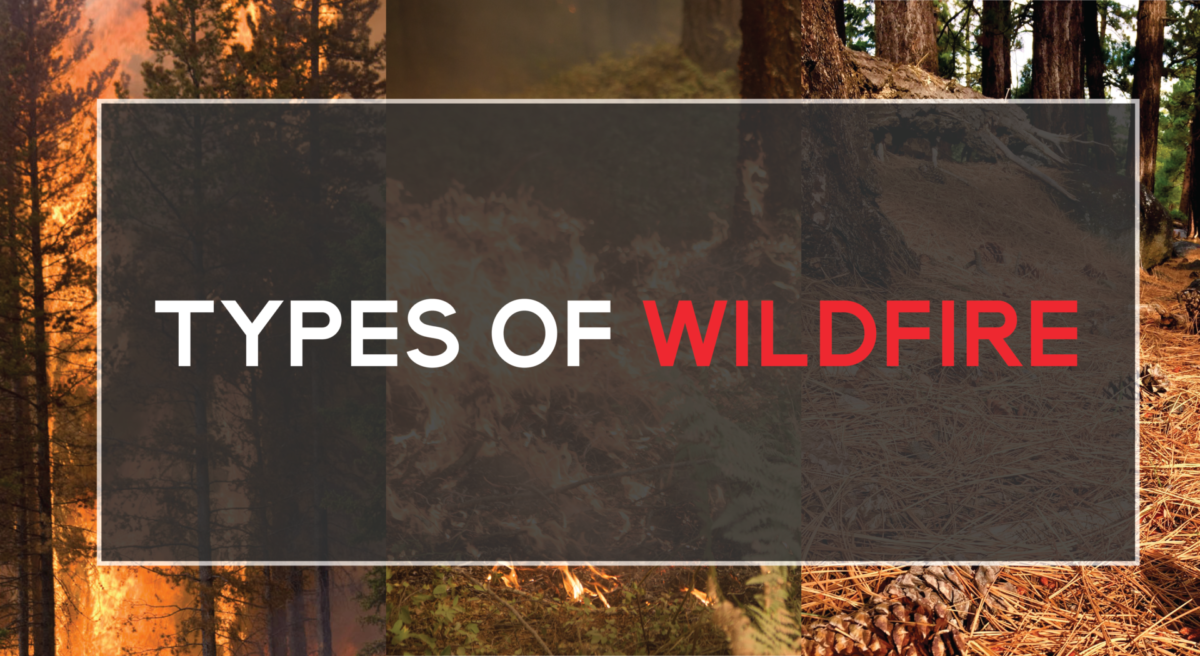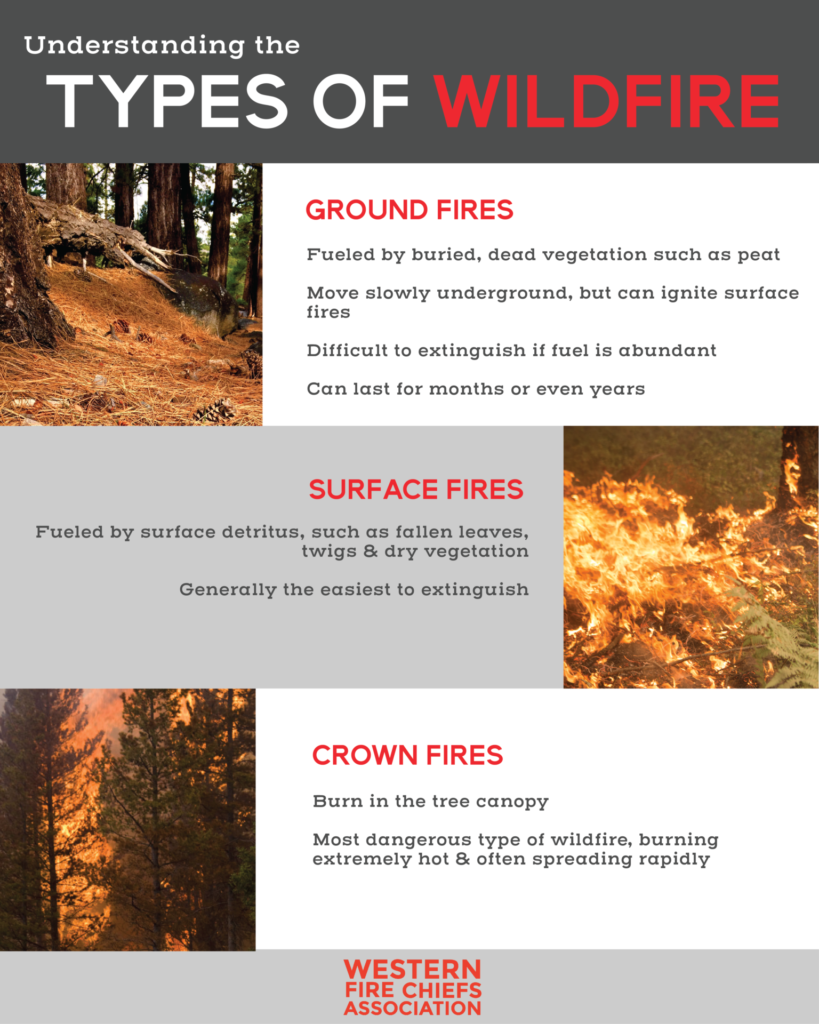Fire Pit Safety Tips
Stay safe around the campfire with tips from the Western Fire Chiefs Association. Learn essential precautions and practices for a worry-free outdoor campfire.
Are there different types of wildfire? The answer is YES! Learn the three types of wildfire and explore simple ways to protect your property.
Published:July 5, 2022
Edited:March 4, 2024

The answer is YES! “Wildfire” is actually an umbrella term that encompasses three different types of fire, each with its own unique fire behavior.
The type and behavior of a wildfire informs how your local or state government will respond. Understanding the types of wildfire will also help you to take the proper steps in order to protect your home.
Wildfires are fires that burn out of control, consuming vegetation such as grass, bushes, and trees, as well as structures in their path. Fire behavior refers to the way a wildfire starts and spreads, depending on the interaction between different kinds of fuel, the weather, and the topography of the geographical area.1
Wildfires are generally categorized as either ground or subsurface fires, surface fires, or crown fires, although in some cases, multiple types can be burning simultaneously. Below is a summary of the three types of wildfire:
Ground fires – also known as ‘subsurface fires’ – can occur in areas with large accumulations of dead vegetation over time, such as humus and peat. They move slowly beneath the surface terrain, making them difficult to see from above. If enough dry fuel is available, ground fires can be extremely difficult put out.1
In some cases, ground fires can continue to smolder underground throughout the winter and reignite aboveground again in the spring. This scenario is more likely during a period of prolonged drought.
Surface fires are the easiest wildfires to put out. They burn detritus such as litter, twigs, and leaves, which sit on the surface of the ground. They can also consume surface vegetation, such as shrubs and grasses.
A crown fire, which burns in the tree canopy, is the most dangerous type of wildfire. It burns extremely hot, and often spreads rapidly through the interconnected branches of trees.

Wildfires spread when there is accessible fuel to keep them burning.
A wildfire doesn’t necessarily need to be close to the fuel source. Wildfire sparks can travel on the wind for miles and ignite anew if they land, still smoldering, on a tree, a building, or another dry, combustible surface. This is why fire watches increase when winds are high.
If the air and the terrain are dry, such as during a drought, these conditions make the spread of wildfires even more likely. When there is no moisture in the air or ground to dampen the fuel and smother flames or sparks, what started as a small fire can quickly rage out of control.
Now that you are familiar with the three types of wildfire, consider the following resources you can use to protect your home:
Missing or loose roof tiles and shingles may let sparks pass through and ignite your roof. Keep your roof repaired and in good condition.
Over time, especially after a windy autumn, your roof and rain gutters will become clogged with dead vegetation and other flammable debris. Be sure to regularly clean these areas out so that you don’t run the risk of them catching fire.
As an extra safety precaution, consider installing ⅛ inch mesh screens in your eaves and attic vents. These screens will catch embers and sparks and prevent them from making it inside the attic, where they could land on hot, dry timbers or insulation and ignite.
A surface or ground fire is less likely to reach your home if you keep all flammable materials away from the exterior walls of the house. Make sure the ground immediately surrounding your home is free of tall grass, mulch, dry leaves, pine needles, firewood, and any other type of vegetation or dry materials which could catch fire.
To decrease the risk of a crown fire reaching your home, plant trees and shrubs a minimum of 5 feet from the house 2, ideally more. If you plant multiple trees within 30 feet of your house, make sure they are spaced at least 18 feet apart to prevent sparks from jumping from one to the next.
Additionally, keep the ground around the base of each tree free of vegetation to prevent surface fires from climbing up the trunk.
The rate of human mortality from wildfire is low, but considering that most wildfires are human-made and therefore preventable, even one death is too many. This line of thinking can be extended to the numerous wild animals and plants that are lost during wildfire events.
Understanding the three types of wildfire and taking steps to harden your home against them will reduce the likelihood of lost life or property in the event of a wildfire.
Stay safe around the campfire with tips from the Western Fire Chiefs Association. Learn essential precautions and practices for a worry-free outdoor campfire.
Discover essential firework safety tips to ensure a dazzling display without accidents. Learn how to celebrate responsibly with expert guidance from WFCA.
Explore the role of AI in wildfire prediction with guidance from the WFCA. Learn how advanced algorithms and data analytics enhance early detection and response.